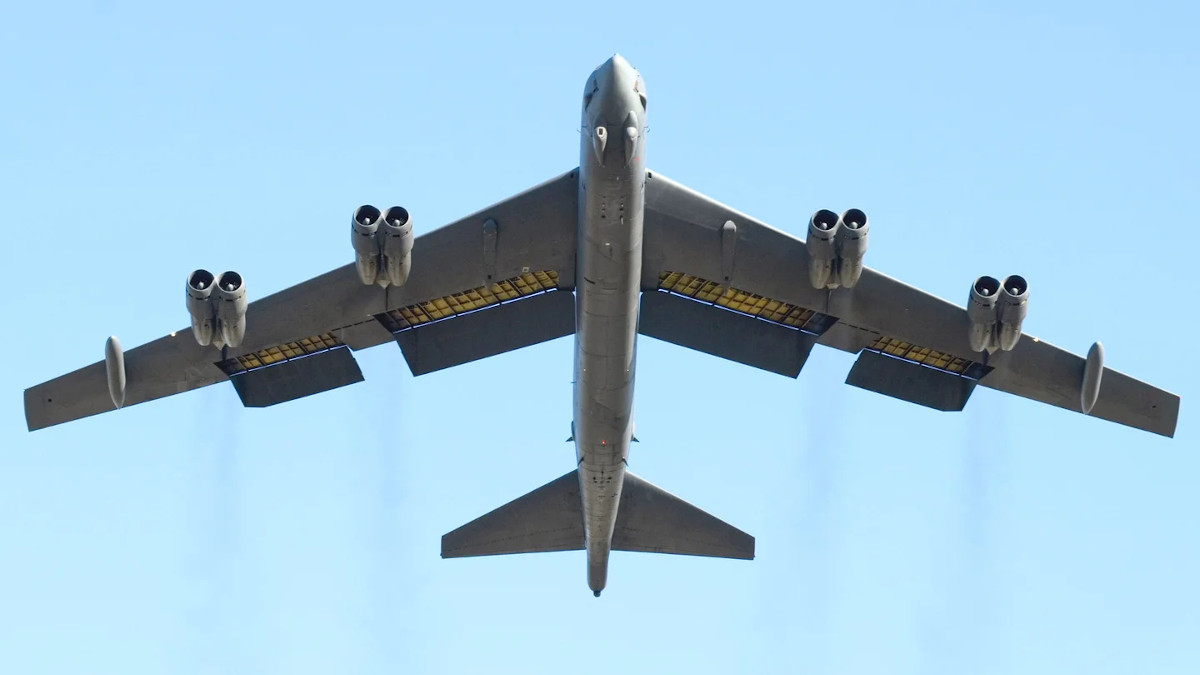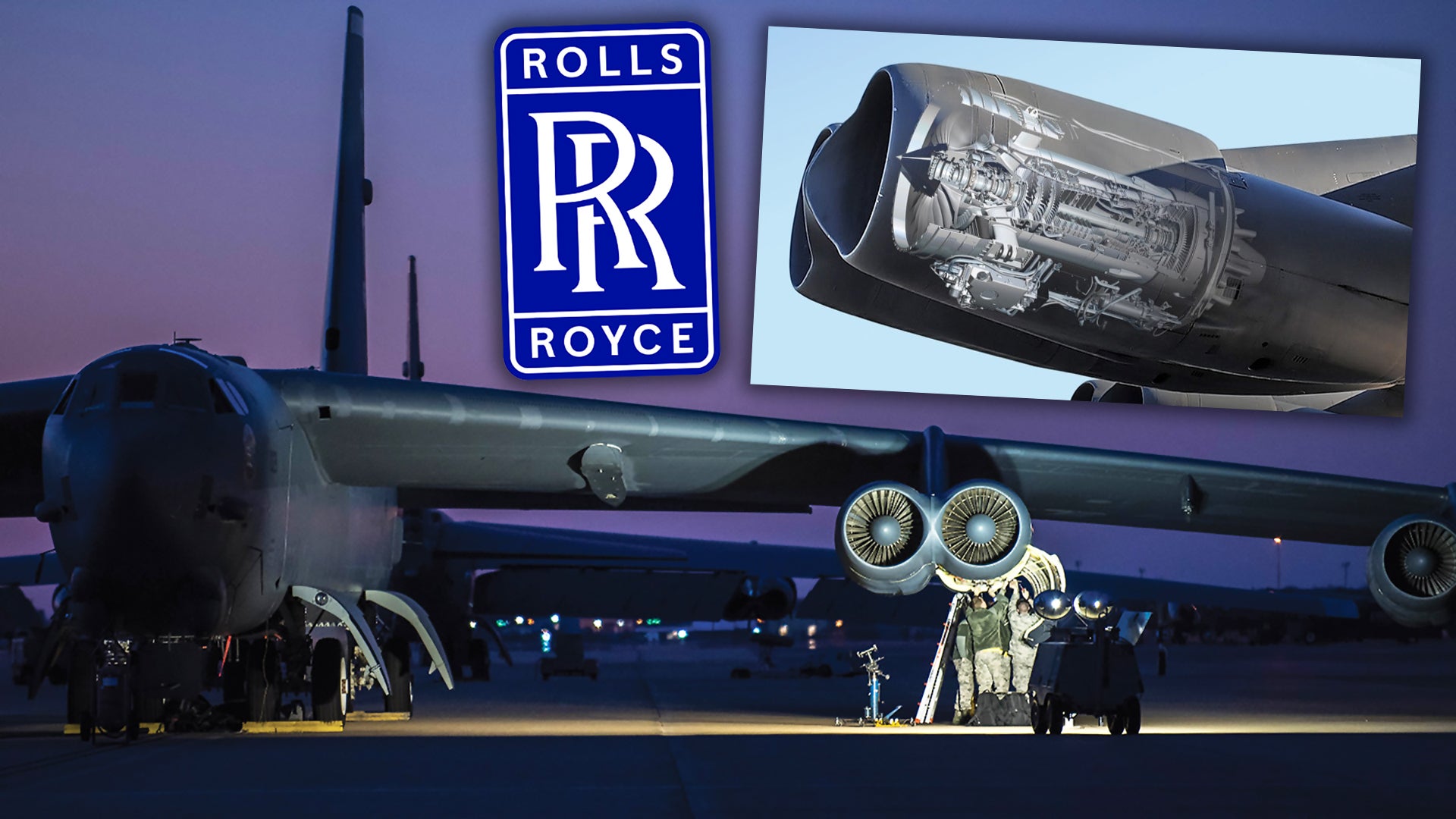The Pentagon has revealed that the U.S. Air Force has chosen Rolls-Royce’s North American division to supply F130 turbofans to re-engine its fleet of B-52H bombers. This upgrade program, which has been years, if not decades, in the making, is a major milestone for the service’s B-52H fleet and will help ensure those bombers keeping flying through 2050.
Details about the deal were included in today’s edition of the Pentagon’s daily contracting notice, which includes information about all awards valued over $7.5 million. Rolls-Royce’s new contract from the Air Force is valued at $500,870,458 over the next six years but could grow to over $2.6 billion if all of its options are exercised.
“This contract provides for 608 commercial engines plus spare engines, associated support equipment and commercial engineering data, to include sustainment activities, to be used on the B-52H bomber fleet,” according to the Pentagon’s announcement. “The location of performance is Indianapolis, Indiana, and work is expected to be completed by Sept. 23, 2038.”
The total number of engines cited here, 608, is exactly enough for one-for-one replacements of the eight Pratt and Whitney TF33 engines found on each of the Air Force’s 76 B-52H bombers. To help keep costs low, the Air Force had required the companies competing for the re-engining deal to submit proposals that would be able to leverage the aircraft’s four existing underwing engine pods, each of which holds two TF33s. Other modifications to the bombers are planned as part of the upgrade process.

Rolls-Royce is confident that the F130s will not need to be completely replaced throughout the rest of the expected service life of the Air Force’s B-52Hs, but it still seems likely the Air Force will want to buy spares as time goes on to ensure it has extra engines should it need them.
The F130 beat out General Electric’s CF34-10 and Pratt and Whitney’s PW800 to secure this deal. Pratt and Whitney was effectively the incumbent in this competition, though the TF33 engine that powers the B-52H now has been out of production since 1985. The company has continued to provide support for TF33s found on B-52Hs and other Air Force aircraft since then, but at an ever-growing cost. As of 2016, the Air Force was spending approximately $2 million
per engine to overhaul TF33s every 6,000 flight hours.


This was an important driver in the Air Force’s decision to move forward with this re-engining plan starting in 2017. The service had previously explored replacing the engines on these bombers but had decided against doing so.
The TF33, which has powered the B-52H since the very first of these bombers entered service in the 1960s, is also just a dated, inefficient, low-bypass design. “Once installed, the F130 will provide vastly greater fuel efficiency while increasing range and reducing tanker aircraft requirements,” Rolls-Royce’s website notes. This was another major factor for the Air Force in deciding whether or not to proceed with the re-engining effort.

When it comes to cost, the F130 also has the benefit of being an established in-production design. F130 is the military designation for Rolls-Royce’s popular BR700, thousands of examples of which power a variety of different business jets, as well as the Boeing 717 airliner. U.S. military C-37A and B aircraft — designations applied to Gulfstream V and 550s, respectively — as well as the Air Force’s Bombardier BD-700-based E-11A Battlefield Airborne Communications Node (BACN) aircraft, already use versions of this engine, further simplifying maintenance and logistics chains.
Regardless, new engines of any kind are a major milestone in the B-52’s already impressively long career and will be critical to ensuring the bombers can continue to serve the Air Force for decades to come. The re-engining is just one of a number of upgrades these aircraft are expected to receive in the coming years, which you can read more about here. Their already diverse arsenal is set to grow substantially, including with the addition of new hypersonic missiles.
All told, the addition of new F130 engines to the Air Force’s B-52Hs is one of, if not the most significant upgrades these aircraft have ever received and is a huge, long-awaited step forward toward this new phase of their service life.
Contact the author: joe@thedrive.com
